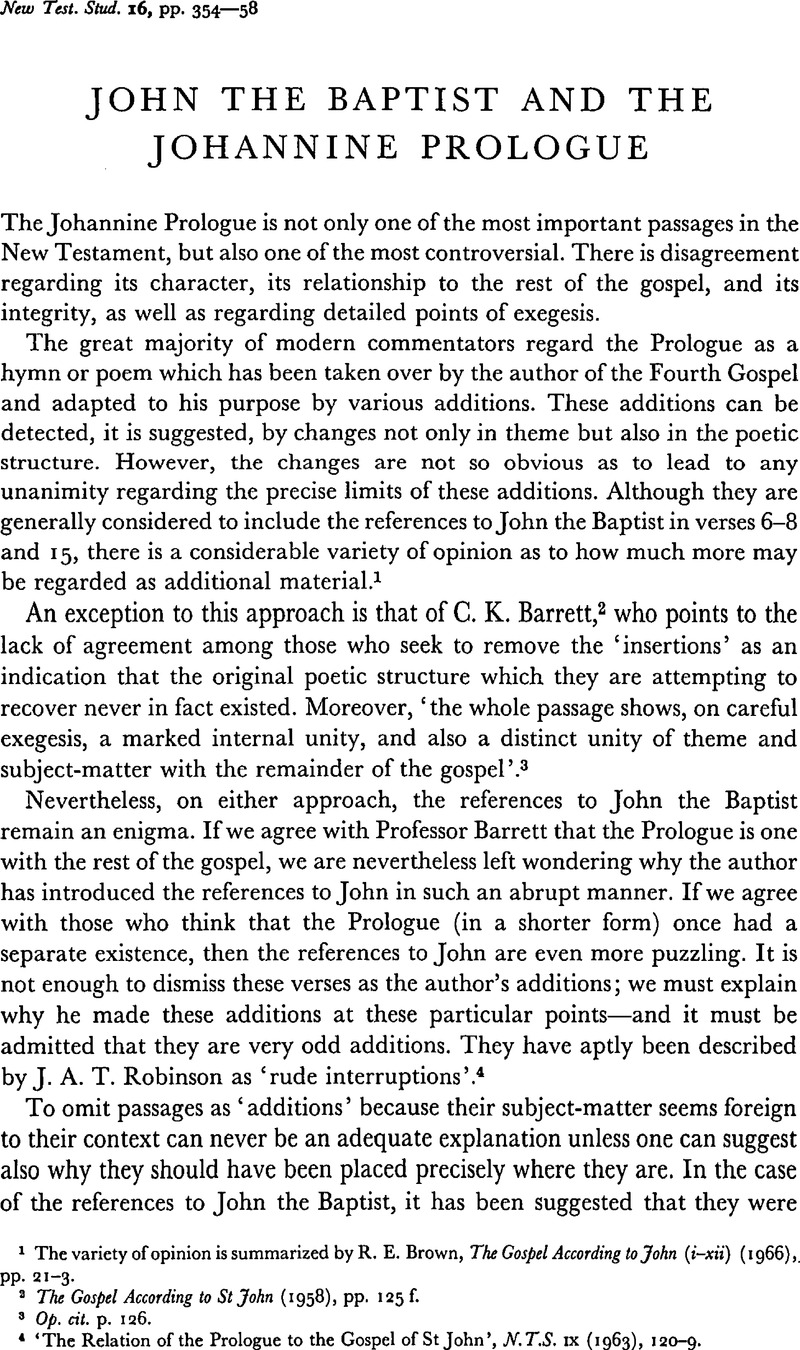Published online by Cambridge University Press: 05 February 2009

page 354 note 1 The variety of opinion is summarized by Brown, R. E., The Gospel According to John (i–xii) (1966), pp. 21–3.Google Scholar
page 354 note 2 The Gospel According to St John (1958), pp. 125 f.Google Scholar
page 354 note 3 Op. cit. p. 126.Google Scholar
page 354 note 4 ‘The Relation of the Prologue to the Gospel of St John’, N.T.S. ix (1963), 120–9.Google Scholar
page 355 note 1 Brown, R. E., op. cit. p. 22.Google Scholar Cf. also Robinson, J. A. T., op. cit. and Howard, W. F., rev. Barrett, C. K., The Fourth Gospel in Recent Criticism and Iterpretation (1955), pp. 118 f.Google Scholar
page 355 note 2 Bultmann, R., Das Evangelium des Johannes (17th edn. 1962), pp. 4 f.Google Scholar
page 355 note 3 There is, of course, evidence (here and in the Clementine literature) that messianic claims were being made on John's behalf, and this would explain the Johannine denial—but not why it is placed at this specific point and in these terms. See the discussion of the Baptist sect in Wink, W., John the Baptist in the Gospel Tradition (1968), pp. 98–105Google Scholar, and Scobie, C., John the Baptist (1964), pp. 187–202.Google Scholar
page 355 note 4 Op. cit. p. 35.Google Scholar
page 355 note 5 Op. cit. p. 125.Google Scholar
page 356 note 1 Cf. Barrett, C. K., op. cit. in loc.Google Scholar; Brown, R. E., op. cit. p. 29Google Scholar, points out how the phrases in this section link with the activity of Jesus in the rest of the gospel. Cadman, W. H., ed. Caird, G. B., The Open Heaven (1969), pp. 20–2Google Scholar, interprets v. 5 as a reference to the incarnation. Similarly Schnackenburg, R., The Gospel according to St John, I (1968), in loc.Google Scholar
page 357 note 1 John here contrasts Jesus with Moses, through whom the Law was given to us, and who, according to Exod. xxxiii. 17–23, was unable to see God.
page 357 note 2 The parallelism between these two statements, together with their similar positioning, supports the interpretation of v. 5 as referring to the incarnation; see above, p. 356 n. 1.
page 358 note 1 Note the use of έθεασάμεθα and έώρακεν in vv. 14–18, echoed by τεθέαμαı and έώρακα in vv. 23 and 34.
page 358 note 2 I am grateful to Professor C. F. Evans for helful criticism of the draft of this article.